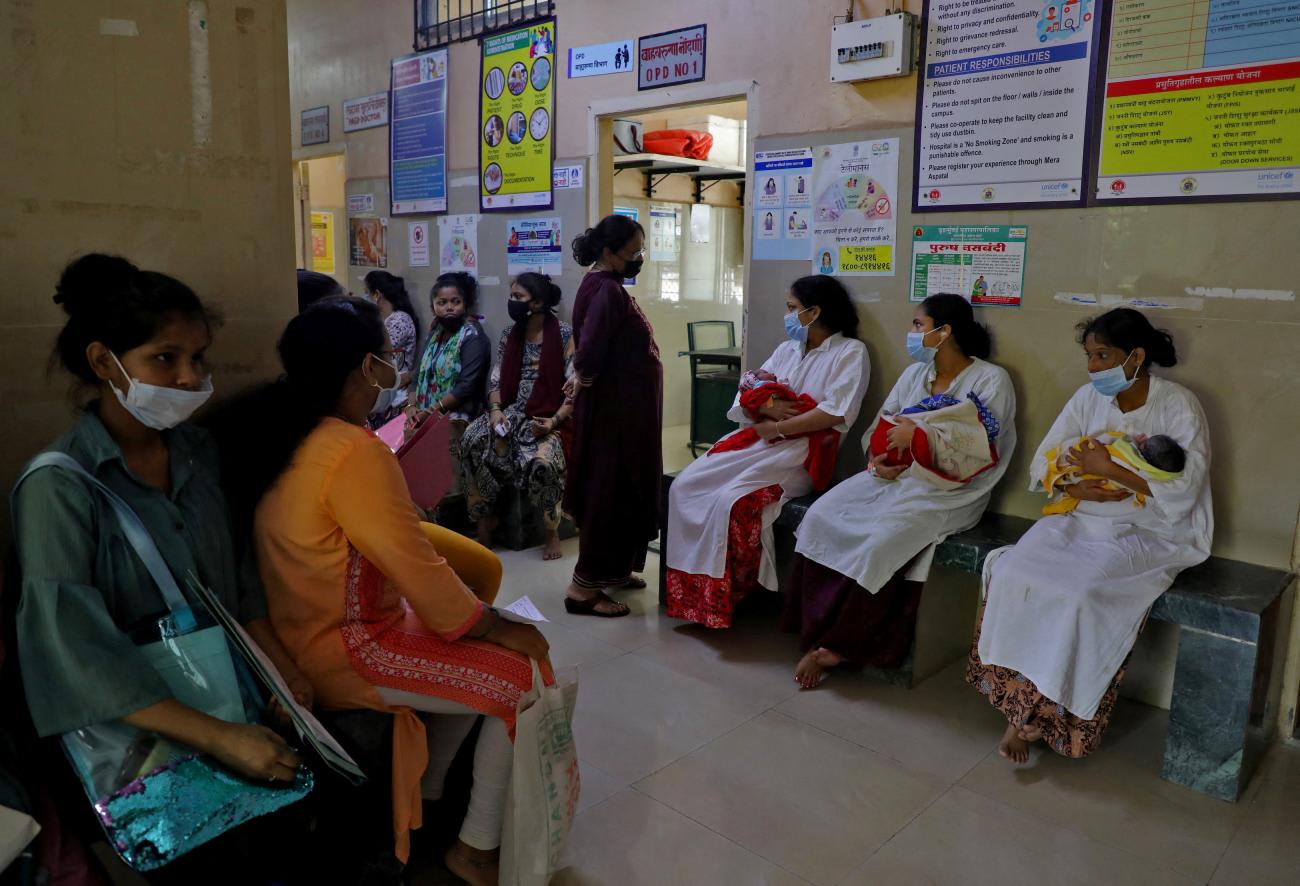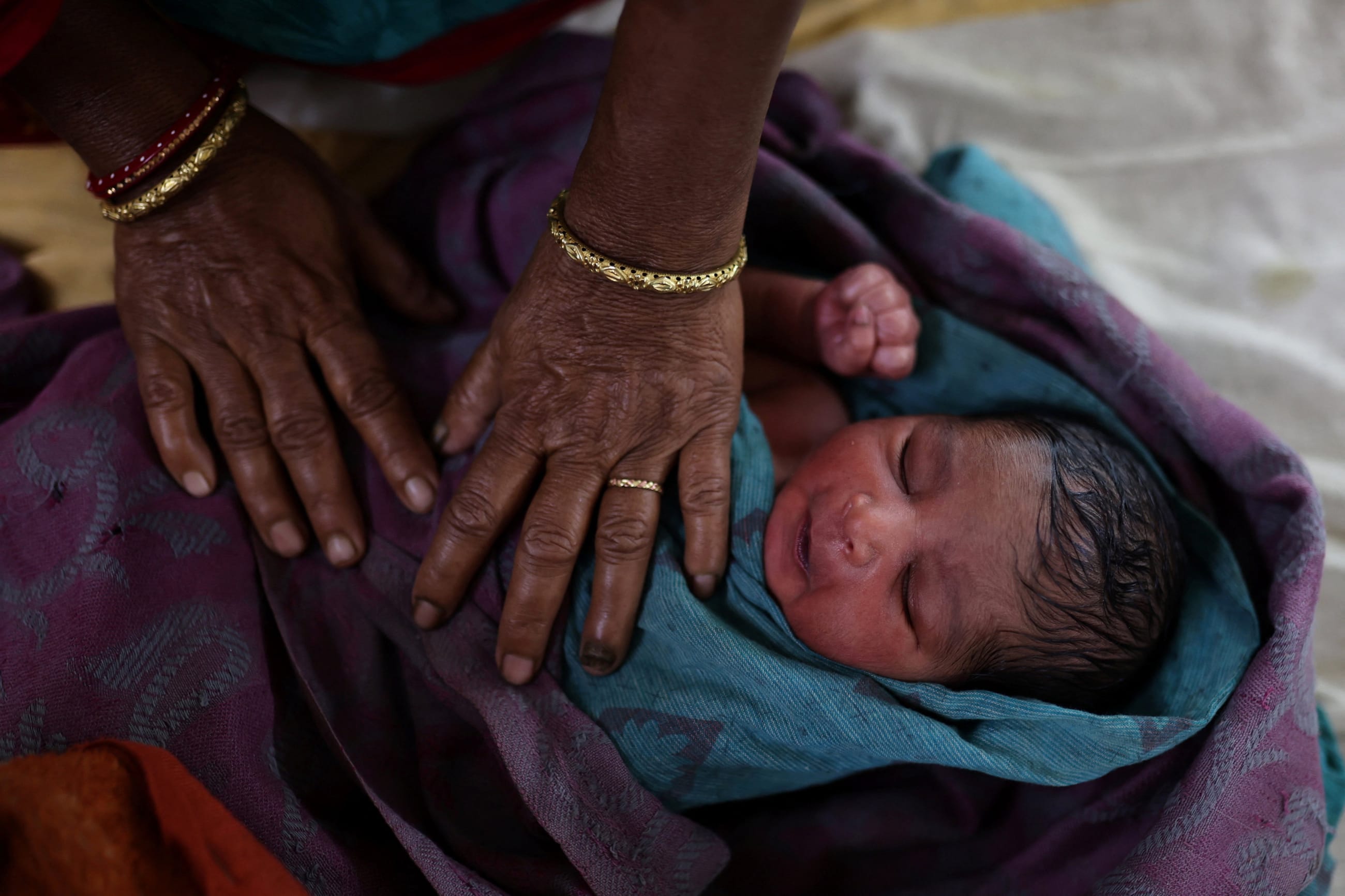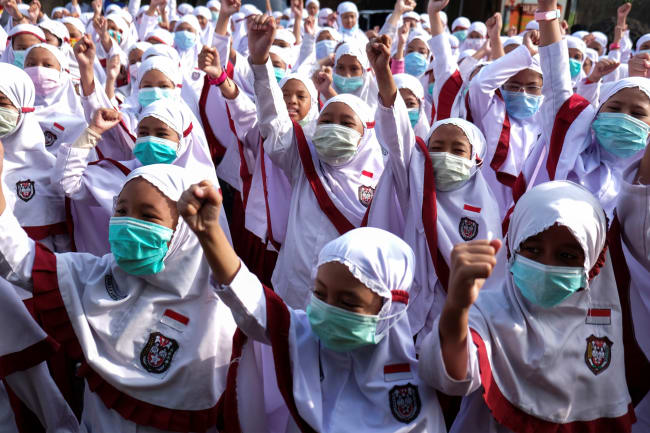The global fertility rate will gradually decline from now through 2100, continuing a trend since 1950, driven largely by female educational attainment and contraception access, according to newly published projections from the Institute for Health Metrics and Evaluation (IHME). Accompanying that decline will be dramatic shifts in the distribution of births throughout the world, with the majority of children being born in some of the poorest parts of the world.
"By the end of the century, over three-quarters of global births will happen in low- and lower-middle income countries, which also happen to be places that are going to be under heat stress and vulnerable conditions—food insecurities, economic challenges, environmental challenges—all piling up on top of having still-high fertility rates," says Natalia Bhattacharjee, an IHME researcher and colead author of the study. High-income countries, meanwhile, will face other challenges, such as maintaining their workforce and managing an aging population's health care and social security.
"We want to bring these trends to the attention of national governments so they can plan for emerging problems in the economy, environment, and geopolitical securities that should be addressed," Bhattacharjee says. The projections are an opportunity to give people "a chance to see what the future would probably look like."
What They Found
The findings, published on March 20 as part of the updated Global Burden of Disease study in The Lancet, reveal that the world's total fertility rate has more than halved since 1950, falling from 4.8 children per childbearing person then to about 2.2 today across 204 countries and territories. That's just barely above a stabilizing population replacement rate of 2.1, though half of today's countries already had rates below replacement levels in 2018. A stable replacement rate is how many births it takes to replace people that have left a community, typically through death or migration.
The world's fertility rate has more than halved since 1950, falling from 4.8 children per childbearing person to 2.2
The researchers predict that the rate will continue to decline to 1.8 in 2050, when roughly a quarter of the world's countries will have fertility rates higher than the replacement rate, and then to 1.6 in 2100, when only six countries will.
The team made additional projections in four scenarios: All people have at least 12 years of education by age 25 by the year 2030; everyone has full access to contraception by 2030; "pro-natal" policies are enacted to create supportive environments for those giving birth; and all three of these are achieved. Examples of pro-natal policies include childcare subsidies, extended parental leave, broader access to infertility treatment, and other forms of support for childcare. Even in the scenario when all three of these occur, however, the global fertility rate would still decline to 1.6 by 2100.
Where the most children are born, however, will look very different and pose a range of challenges that policymakers will need to begin planning for today.
"These fertility trends have very far-reaching implications, from economic, climate change, and labor force points of view," says Randi Goldman, an OB/GYN and program director of the Reproductive Endocrinology and Infertility Fellowship at the Zucker School of Medicine at Hofstra/Northwell in New York. "It's going to be really critical that we have well-informed proactive policymakers who can address some of the upcoming challenges that come from this change in the global fertility rate."
More than half the world's population will be born in sub-Saharan Africa by 2100, with just 1 in 10 children born in what are high-income countries today. On the one hand, the falling fertility rate could help reduce carbon emissions and "alleviate some strain on global food systems, fragile environments, and other finite resources," the study authors write. At the same time, however, most children will be born in parts of the world with the least health-care infrastructure and "most vulnerable to climate change, resource insecurity, political instability, poverty, and child mortality."
The potential silver lining of the decline is that fewer people use fewer resources. Nonetheless, Goldman says, "I'm not sure those benefits are going to offset the risks having lower fertility rates worldwide with all the other implications."

By 2100, more than 3 in 4 children (77%) will be born in low- or middle-income countries. That will include more than one-third of the world's births (35%) in low-income countries, which today make up about 18% of the total. By contrast, only about 1 in 10 (11%) children will be born in high-income countries in 2100.
In today's high-income countries, the shrinking fertility rate will mean a shrinking labor force, with fewer working-age adults available to support a larger aging population that will be living longer. Policymakers will therefore need to plan for the increased pressure on health insurance, social security, and health-care infrastructure, the study authors note.
Better and more open immigration policies can be part of the solution for high-income countries, Bhattacharjee says. Immigration, though, is also a very complicated potential solution, Goldman adds. Immigration policies to address future low-fertility challenges should be implemented thoughtfully and ethically, she says, both in terms of nonexploitative policies concerning the immigrants and given the risk of brain drain. When people coming from lower-income countries enter the workforce of higher-income countries, "what's it going to do to that lower-income country when you're losing that potential workforce that would bring in economic growth to the country they are leaving?" she says.
Health care is one labor sector that could be particularly hit hard by a shrinking workforce, Goldman says. Technology advancement in automation and artificial intelligence could blunt some of the projected shortfall in productivity of higher income countries, Goldman and the authors note. But again, it requires ethical implementation because it also has the potential to increase disparities given that not everyone will have access.
South Asia will go from contributing about 25% of today's global births to just 7% by 2100
Further, the resources that are limited today could differ from those of tomorrow, depending on technological advancements, Goldman adds. "One of the beautiful things about technology is that we don't always know exactly what's coming around the corner and what might be globally life-changing from an economic standpoint." The solutions to these challenges will depend on each country, its culture, its values, its circumstances, and its resources, Bhattacharjee notes. "There is no one magic solution for each and every country."
Perhaps the biggest demographic shift will be the anticipated explosion of births in sub-Saharan Africa. Births there currently account for nearly 30% of the world's population today, but are expected to increase to more than half (54%) in 2100. Even then, however, the overall fertility rate of sub-Saharan Africa will likely fall below replacement levels at about 1.8 per childbearing person.
Births in the rest of the world will gradually decrease, with South Asia, for example, going from contributing about 25% of today's global births to just 7% by 2100.
Making Sense of Falling Fertility
The authors caution that their prediction of declining global fertility "should not be used to justify more draconian measures that limit reproductive rights," such as restricting access to contraception or abortion, both because these are fundamental rights that should be available to all people and because of the negative impacts such restrictions have on individuals and society as a whole. They point to the example of Romania in the 1960s through the 1980s, when severe restrictions on contraception and abortion resulted in high maternal mortality rates, growth in orphanage populations, and long-term harmful effects on overall educational outcomes and the labor market.
Jose Rimon, a senior scientist at the Johns Hopkins Bloomberg School of Public Health and director of the William H. Gates Sr. Institute for Population and Reproductive Health, says he is a bit more optimistic about how fertility rates will shift in Africa, where the rate of increase in contraceptive use is faster than that of South Asia, though Africa also began at a lower percentage. He praises the effort the authors made in projecting these demographic futures and how they can also inform climate change projections, given that fertility rates are not generally included in climate projection models.
"This is a huge contribution to many thinkers around climate change and discussions around population decline and aging in a way that is rational and reflective," Rimon says.

But Rimon also points out some concepts the authors neglected to address. In discussing the risks of a growing older population and shrinking population of working-age adults, for example, the authors do not discuss the second demographic dividend. That is, following the demographic dividend of expanded economic growth when a country's working population is larger than its dependent population, the second demographic dividend is the accumulation of wealth by the older generation that they then transfer to the younger generation.
"The problem is that we are operating with the same conceptual framework when the world is changing around us," Rimon says. He also notes that the authors gave little attention to population momentum, the continued growth of the population even after a society's fertility rate falls to the replacement rate.
Stein Emil Vollset, a cosenior author of the study, and head of the Global Burden of Disease Collaborating Unit at the Norwegian Institute of Public Health, acknowledges that their model did not take into account the second dividend but says that it "could rather be studied as a consequence of our forecasts and is relevant to how governments handle the steep aging curve we will see as a consequence of our future fertility projections."
The authors do mention population momentum briefly, but characterize it as much shorter (about 30 years) than traditional estimates (about 70 years).
Our finding indicates that the population momentum among countries may be shrinking
Stein Emil Vollset, Norwegian Institute of Public
"It is known that there is a wide variation in the population momentum from country to country. This depends on the pace of the fertility decline, the age structure of the population, and migration," Vollset says. "Our finding indicates that the population momentum among countries may be shrinking."
To make their projections, the researchers rely on methods similar to their projections published in 2020, calculating the "complete cohort fertility at age 50," or the anticipated number of children who will be born to women born in a specific time span. However, they incorporate newly available data—from 147 surveys and 21 censuses—and two new factors to adjust for potential influences to fertility rates.
In addition to adjusting their model for female educational attainment and meeting all contraception needs, as they did for the 2020 publication, the new estimates consider estimated mortality of children under age five and population density in all habitable areas globally. Those latter factors were added in response to feedback to their 2020 report, including a critique authored by Stuart Gietel-Basten and Tomas Sobotka that Vollset and his colleagues responded to at the time.
Despite these enhancements to the data, the findings remain limited by incomplete, delayed, or otherwise poorly reported data from many low- and lower-middle income countries, though the researchers attempted to adjust for those limitations as much as possible. The authors also had to rely on past data for predicting fertility and future drivers of fertility while acknowledging that "the past is not always predictive of the future." Further, they could not account for impacts from food insecurity, geopolitical events, or severe effects from climate change, as well as other potential unforeseen factors the future could bring.
"It's impossible to account for everything," as the pandemic revealed, Goldman says, but she feels that the authors did as well as was possible. "Nobody has a crystal ball."













